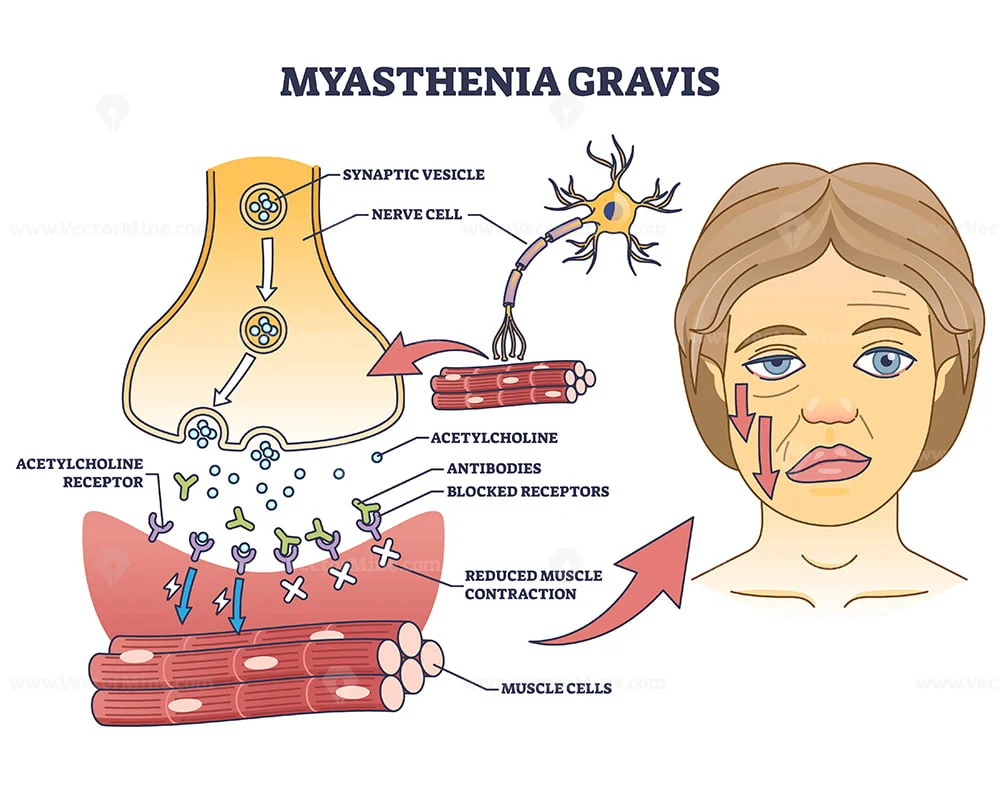Brain and ENT Clinic – Dr Lalit Mahajan In Nagpur & Dr Rachna Gangwani Mahajan In Nagpur
Myasthenia gravis in Chhindwara

Myasthenia gravis in Chhindwara is an autoimmune condition that affects nerve communication with muscle that causes skeletal muscle weakness. These are the muscles that affect myasthenia gravis connect to the bones and help to move.
Myasthenia gravis affects the muscles of the eyes, face, neck, arms, and legs. It affects the ability of the eyes to blink, move, or keep open. It also affects facial expression in chewing, swallowing, and talking. Muscle weakness gets worse when the patient does physical activity and it improves after rest.
Myasthenia gravis is a chronic and long-lasting condition that affects the junction between the nerves and muscles. about 20 out of every 100,000 people around the world are affected by this condition. There is no cure for this condition but treatment can help to manage the symptoms.
Types of Myasthenia gravis:
The types of Myasthenia gravis in Chhindwara gravis are:
- Autoimmune myasthenia: It is an autoimmune condition where the cause is difficult to understand. But the main cause is the production of antibodies. Thus, There are two sub types of this disorder ocular and generalized.
- Neonatal myasthenia: When a newly born baby has certain antibodies from the parent who has this disorder is called Neonatal myasthenia. Therfore, These symptoms are temporary and go away after three months.
- Congenital myasthenia: It is not an autoimmune condition; Since, it is a genetic cause.
Symptoms of myasthenia gravis:
Symptoms of myasthenia gravis may include Muscle weakness in the arms, hands, fingers, legs and neck, patient feels fatigue, droopy eyelids, blurry or double vision, difficulty in speaking, swallowing or chewing.
In myasthenia gravis, Initial symptoms happen suddenly. Firstly, Patients feel weaker when they are active in their work, and strength returns after rest. Since, Most patients feel strongest when day starts and weakest at the end of the day. Once, In rare case myasthenia gravis affects muscles of respiratory system may cause shortness of breath or breathing problem.
Diagnosis and Test :
To diagnose myasthenia gravis doctor, perform a physical exam and ask some questions to know more details about symptoms and medical history.Therefore, Some test can confirm the diagnosis, the tests are:
- Blood antibody test: About 85% of myasthenia gravis patients has high levels of acetylcholine receptor antibodies in their blood can easily diagnose with blood antibody test.
- Imaging scans: An imaging scan like MRI or CT scan helps to diagnosing thymus gland problems.
- Electromyography (EMG): An EMG measures the electrical activity detects communication problems between nerves and muscles.
Treatments for myasthenia gravis:
Some treatment options are:
- Medication: some medicines are helpful to reduce the symptoms.
- Monoclonal antibodies: Intravenous (IV) or subcutaneous (SQ) infusions can reduce an overactive immune system.
- Plasma exchange: An IV connected to a machine removes harmful antibodies and replaces them with donor plasma.
- Surgery: surgery helps to remove the thymus gland
